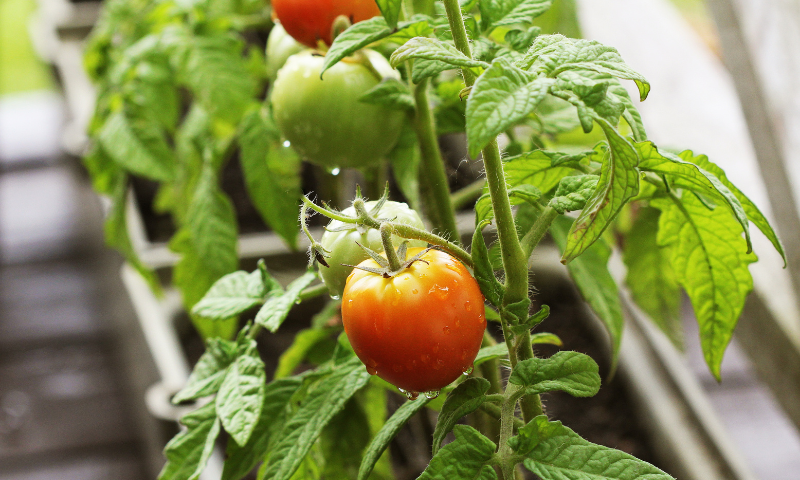There’s a certain joy that springs from watching a tiny seed grow into food, from the satisfaction of nurturing a plant to the proud moment of eating produce you grew yourself. Gardening isn’t just about nurturing plants, it’s about nourishing your wellbeing.
Follow the steps below to learn how to start an edible garden for beginners and reap what you sow.
How to Create an Edible Garden
Step 1: Selecting Your Garden Site
The first and most crucial step in starting an edible garden is finding the right spot. Your plot of earth needs to receive at least six to eight hours of direct sunlight. Deciding on a sunny location is imperative for good growth, as most vegetables and fruits need sunlight to photosynthesize and develop tasty fruit. Also, make sure that your spot has good soil drainage. Standing water around plants can lead to root rot and other issues.
Step 2: Preparing the Soil
Healthy, fruitful plants begin with healthy soil. Check the pH level of your soil; most edible plants thrive in a neutral to slightly acidic pH level. You can enhance your soil with organic matter such as compost, which improves not only the soil structure but also its fertility, its ability to retain moisture, and the population of beneficial microorganisms.
Step 3: Choosing Your Crops
When choosing what to grow, consider your local environment. Different plants thrive in different regions and climates. Begin with easy-to-grow crops like tomatoes, lettuce, zucchini and herbs. These crops are hardy, yielding and forgiving to newcomers. Also, think about what you most enjoy eating. There is so much satisfaction in growing something you love!
Step 4: Planting Your Garden
Before planting, research the ideal spacing between plants, which is typically listed on seed packets or plant tags. Make sure you’re planting at the right time of year for your region. It’s usually best to plant after the last expected frost. Water your plants well after planting to help reduce transplant shock and encourage establishment.
Step 5: Watering Your Garden
Consistent watering is key to keeping your plants happy and healthy. The amount of water your garden needs will depend on your climate, soil, and the types of plants you’ve chosen. A general rule of thumb is to aim for about an inch of water per week, keeping in mind that it’s usually better to water less frequently but more deeply to encourage deep root growth.
Step 6: Tending Your Garden
Tending to your garden means more than just keeping it watered. It involves keeping an eye out for pests and diseases, and addressing any issues as they appear. Insecticidal soaps are a good natural solution for many pests, and regularly weeding can help keep your plants strong by reducing competition for resources.
Step 7: Harvesting Your Crops
Knowing when to harvest is as important as knowing when to plant. Most vegetables are at their best for eating when they are young, tender and small. Harvesting regularly encourages plants to produce more crops. When it comes to fruits, like tomatoes or berries, wait until the color and texture indicate ripeness.
Step 8: Enjoying the Fruits of Your Labor
The best part of gardening is enjoying the food you’ve grown. It’s not just about flavor; the freshness and the nutrient density of homegrown produce are unmatched. It’s a rewarding experience that connects you to your food in a meaningful and healthy way.
The Health Benefits of Growing Your Own Food
- Physical Activity: Gardening is a moderate-intensity exercise that involves a variety of movement, from digging and planting to weeding and harvesting.
- Stress Reduction: Being outside and engaging with nature has been shown to reduce stress and improve mental health.
- Nutrition: Homegrown produce is often more nutrient-dense than store-bought, as it can be eaten soon after harvest when its nutrients are most potent.
- Connection to Food: When you grow your own food, you have a more direct connection to what you eat, which can lead to healthier food choices and more diversity in your diet.
By following these steps, you’ll not only create a productive edible garden but also cultivate a relationship with the natural world that can enhance your health happiness, and wellbeing. Happy gardening!






